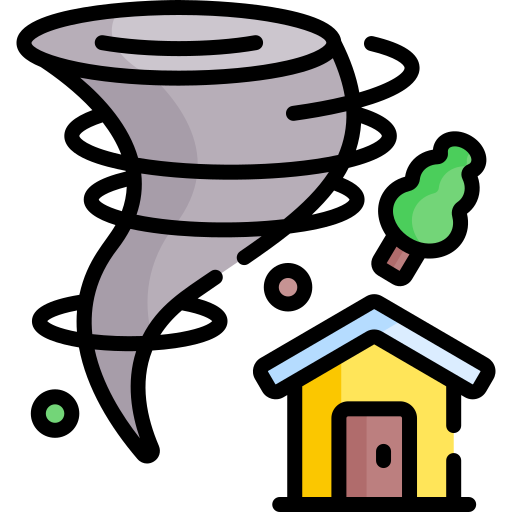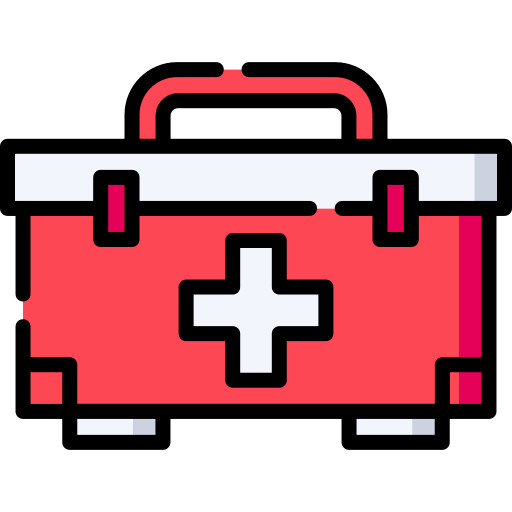
This logo isn't an ad or affiliate link. It's an organization that shares in our mission, and empowered the authors to share their insights in Byte form.
Rumie vets Bytes for compliance with our
Standards.
The organization is responsible for the completeness and reliability of the content.
Learn more
about how Rumie works with partners.
Due to climate change, extreme weather events are becoming more frequent and dangerous.
That's why it's important to be ready in case one happens in your community.
What is considered extreme weather?
Extreme weather events are incidents of unusually severe weather or climate conditions that can cause devastating impacts on communities, agricultural, and natural ecosystems.
These events can be either short-lived (such as heat waves, freezes, heavy downpours, and tornadoes) or they can be long-lasting (such as droughts and wildfires).

Why is it important to know how to prepare for extreme weather events?
There are numerous benefits to knowing how to prepare for extreme weather events such as:
Reduce harm: Extreme weather events can be dangerous and cause injuries. Preparedness, like evacuation plans, cuts the risk of harm.
Protect property: Extreme weather events can cause significant property damage. Preparedness, like securing homes, minimizes damage.
Protect health: Extreme weather events can lead to public health problems, such as food shortages and diseases. Preparedness, like stockpiling food, protects your health.
Step 1: Know the Risks and Get Prepared
Understanding the different types of extreme weather events and the risks associated with them, specifically the ones that are likely to affect your location, is important for making informed decisions and taking the appropriate measures to ensure the safety of you, your family, and friends.

Here are some different types of extreme weather, the risks posed by them, and ways to prepare:

Heat Waves
Heat waves are periods of unusually hot weather that can last for several days or even weeks.
These bring risks of dehydration, heat exhaustion, and heatstroke due to high temperatures.
Stay hydrated and seek cool environments during extreme heat.

Freezes
Freezes are periods of unusually cold weather that can damage crops and infrastructure.
They can cause frostbite and hypothermia when exposed to the cold for long periods.
Protect plants, pipes, and outdoor items during these cold spells.

Droughts
Droughts are periods of abnormally dry weather that can last for months or even years.
They can cause widespread crop failures and water shortages.
Conserve water and follow water usage guidelines.

Wildfires
Wildfires are uncontrolled fires that can spread quickly and cause widespread damage.
They are often caused by lightning strikes or human activity.
Have an evacuation plan and follow authority warnings.

Heavy Downpours
Heavy downpours can lead to flooding, landslides, and mudslides.
This can cause widespread damage to homes, businesses, and infrastructure.
Avoid flood-prone areas and places with improper drainage.

Tornadoes
Tornadoes are powerful rotating columns of air that can cause widespread damage.
They are difficult to predict, but there are some warning signs that can help people identify them.
Identify a shelter and stay updated through weather alerts.
Quiz
Imagine a windstorm is approaching your city. Which of the following factors put your home at greater risk?
The presence of nearby trees and objects poses a greater risk to your home during a windstorm. These objects can potentially fall on the roof, causing damage. Maintaining a safe distance from trees and securing loose objects can help reduce the risk of property damage during extreme weather events.
Step 2: Make an Emergency Plan

Family Emergency Plan
Create a plan with your family to determine where to go, how to communicate, and what to do in different scenarios.
Make sure everybody has a copy of the plan and keeps it close at hand.
Regularly review and practice the plan to ensure that everyone in the family is familiar with the procedures.
Emergency Contacts
Have a list of important contacts including family, friends, and local authorities.
Have a backup plan for communication in case cell phone networks and other communication systems are down.
Ensure everyone has a primary and secondary contact, someone who lives outside of your area and someone who lives in your area but may not be able to communicate with you immediately during an emergency.
Meeting Places
Establish meeting places both inside and outside your neighborhood in case of separation.
Choose a meeting place, in a safe and easily accessible area, where your family can reunite if they are separated.
Consider the 4 types of meeting places for different scenarios: indoor, neighborhood, out-of-neighbourhood, and out-of-town.
Evacuation Routes
Identify safe routes and destinations for evacuation.
Plan a primary and backup evacuation destinations, such as a friend or family member in or out of town, a hotel, or a shelter.
Plan a primary and backup evacuation routes to your destinations. Keep a physical map of the area.
Monitor weather reports and evacuation instructions from your local authorities.
Quiz
A heavy storm is expected in your area. You see an emergency alert on your phone. What should you do?
Following the emergency alert's instructions is crucial during a heavy storm because it provides guidance from authorities who have assessed the situation and are best equipped to ensure safety. These instructions might include seeking shelter, moving to a specific location, or taking necessary precautions to protect yourself and others.
Did you know?
During Hurricane Katrina in 2005, the evacuation of New Orleans became one of the largest in U.S. history, with approximately 1.2 million people evacuated in preparation for the hurricane.
Step 3: Get an Emergency Kit

Basic Emergency Kit
Water in small bottles that can be easily carried (Each person needs at least two litres of water per day)
Food that won't spoil, such as canned food, energy bars, and dried foods
Manual can opener
Crank or battery-powered flashlight (and extra batteries)
Crank or battery-powered radio (and extra batteries)
Special items such as prescription medications, infant formula, equipment for people with disabilities, etc
Pet items such as pet food, water, and transportation
Extra keys to your car and house
Cash in smaller bills and change for payphones
A copy of your emergency plan and contact information
Identification and important documents in a waterproof container such as birth certificates, passports, medical records, financial documents, and insurance policies
Tips for your Emergency Kit:
Make sure your kit is easy to carry, such as in a backpack, duffel bag, or suitcase.
It should also be in an accessible place and easy-to-reach place, such as your front hall closet.
Make sure everyone in the household knows where the emergency kit is.
Remember to replace food and water once a year.
Quiz
There hasn't been an extreme weather event in your area for a while. Your kit is sitting in your basement. What should you do?
Restocking and refreshing your emergency kit ensures that you're prepared for unexpected extreme weather events. Over time, supplies might expire or degrade, making them less effective when needed. By regularly updating the kit with fresh supplies, you ensure that it's ready for use when a sudden weather event occurs, increasing your ability to stay safe and secure during emergencies.
Did you know?
The sale of certain items skyrocket before major storms. For instance, before hurricanes or blizzards, there is often a spike in the sales of items like flashlights, batteries, and non-perishable foods.
Take Action
Now that you understand what extreme weather is all about, how it can affect us, and what you can do to be ready for it, you, your family, and your friends are now prepared to face an extreme weather event!

Follow these steps to prepare:
